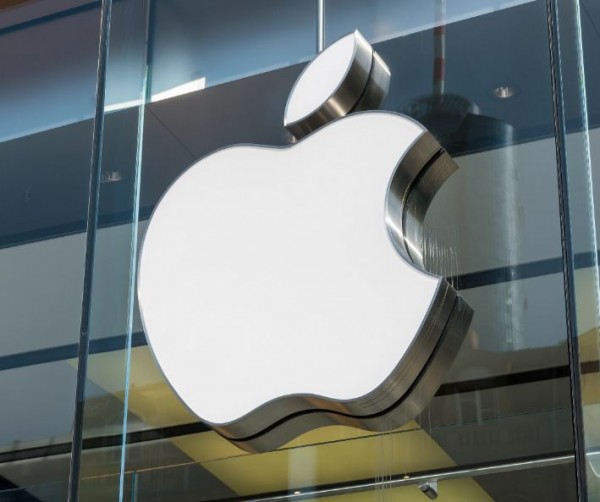
Posts Tagged "Exit consultation"
When Apple Lost $10 Billion…And What It Means for You
By: Patrick Ungashick

Back in 2011, when Apple announced the retirement of its founder and visionary leader Steve Jobs, the company’s value immediately fell by about $10 billion. (That’s billion with a B.) This dramatic loss of value occurred even though Jobs’ departure had been expected for some time, and his successor Tim Cook was a highly respected leader already established within the company. Investors were simply too disturbed and uncertain about how the company would fare without Jobs as CEO.
Since then, most of us know that Apple has not only survived, but it has thrived under Cook and other talented leaders. There is an important lesson for business owners with small to mid-market companies: when it is time for you to exit, it must be clear to everybody involved that your company can not only survive your departure but can actually thrive without you going forward. If the company’s leadership is uncertain without you, you find it very difficult to exit happily. Here’s why.
Owner Dependency
We call this issue, “Owner Dependency.” Within many small to mid-sized businesses, the owner is the most valuable and vital employee, and the company is highly dependent on this owner’s involvement. If you lead an owner-dependent company, then your knowledge, relationships, and vision are what drives the business. Undoubtedly you have help—few CEO/owners build a business alone. But much of your company growth has been due to your personal presence and efforts.
None of this is a problem, as long as you have no desire to go anywhere. But, one day, you will wish to exit. If, at that time, you remain an essential employee, you may face several serious challenges that can undermine or outright block your exit. Here are four examples:
Lost Business Value
Apple lost $10 billion when a flood of investors sold their stock upon learning Jobs was stepping down. In their minds at the time, the company was less valuable without him.
The same may happen to you and your company when you exit. If you intend to sell your company one day, buyers may reduce their offer price (or take a pass altogether) if they have questions and uncertainty about the company’s future without you. You might not lose $10 billion, but if buyers reduce their offer price by even a few tenths of a multiple, that can add up to a serious loss of value for you.
If the value loss is severe enough, you might be in jeopardy of never reaching personal financial freedom at exit—which is most owner’s number one exit goal.
Lost Legacy
For most owners, achieving a happy exit is not just about the money. It’s also about making sure that you leave the company in good hands, and that the company is well–positioned for success going forward. A company that may not run effectively without you faces an uncertain future once you exit. Most owners will not want to take that risk.
Lost Control
When you exit from your company, you will want to be in control of how you do this. For example, you will want to exit when you choose to, and not when somebody else dictates. You will also want to transition away from the company in the manner of your control. Some business owners want to make a quick transition, moving on to pursue other interests. Other business owners prefer to stay with the company for an extended transition, staying involved in some supporting role, such as serving on the board of directors. Whatever your preferences, if the company is unable to operate effectively without you, your ability to control your own exit will be restricted or forfeited. You can’t exit on your terms as long as your company needs you every day.
Big Uncertainty About Life After Exit
One of the biggest challenges owners face in life after exit is finding activities and interests that provide meaningful involvement once your role in the company has reduced or ended. If your company is highly dependent on you, typically, that means you rarely or never unplug from the company for any significant period of time, beyond perhaps a brief vacation here or there. Without taking an extended time to unplug, you cannot develop and test-drive your ideas for activities and interests after exit. And, without taking time to unplug, you cannot create an organization that learns how to function without you.
It will not matter how much money you might have in the bank at exit, or how well the company is doing after you exit, if you wake up every day without something engaging and rewarding to do with your time and talent.
Get Started Now
Apple’s setback reveals that all business value is fragile. One of the world’s largest and most admired companies felt the negative impact of being potentially overly dependent on a single leader.
Building a leadership team that can lead and grows the company without you takes time, typically years of focused effort. An important part of any exit plan is developing competent and loyal successor leaders. The sooner you get started, the more likely you achieve a happy exit.
To learn eight tactics to address owner dependency, read this article. And, contact us to discuss your situation and how we help owners like you achieve happy and successful exits.
If you have a quick question coming out of this article or, if you want to discuss your situation in more detail, we can set up a confidential and complimentary phone consultation at your convenience contact Tim 772-221-4499
Your Last Five Years: How the Final 60 Months will Make or Break Your Exit Success

Have you been telling yourself you want to exit from your business sometime within the next “five or so years” for a long time now?
What you do these final five years (60 months) will determine your exit success or failure.
This webinar explains how, and covers:
- Immediate steps to take when you reach five years before exit
- Biggest mistakes owners make, and how to avoid them
- Checklist of things to not overlook

If you want to discuss your situation in more detail, we can set up a confidential and complimentary phone consultation at your convenience contact Tim 772-221-4499.

Why There are Only Four Exit Strategies and the Danger of Not Knowing Yours
By: Patrick Ungashick

To the surprise of many business owners, there are only four ways to exit from a company. One day, you will either pass your company to family members, sell to an outside buyer, sell to an inside buyer, or shut it down. Those are the only four possible exit strategies. Period. They are:
1) Pass to family
2) Sell to Outside Buyer
3) Sell to Inside Buyer
4) Shut it Down
Accurately identifying which of these four exit strategies is yours can make or break your exit success. Here’s why.
But wait – What About Other Exit Strategies?
Before explaining why it’s imperative to know which of the four exit strategy is yours, you might need proof that only these four occur. Let’s start with “I never want to exit”—a common sentiment. Saying you never want to exit means, you intend to hold onto the company until you die (or perhaps get very, very sick.) Death is not a strategy—it’s a timing event. If you still own some or all of your business at your end, one of the four outcomes listed above will always happen: your interest in your company will pass down to family or be sold to an outside buyer or be sold to an inside buyer, or the company will be shut down. If you intend to own your company until death, that’s fine, but you still have to determine what happens to your company at that time.
What about the idea of holding onto your company and letting a management team run it while you sit back and deposit distribution checks? This is not an exit strategy either. Having a competent management team that can run your business without you is excellent. It can give you time to do other things and increase your business’s value. But it’s not an exit strategy. You still own the company. You will yet have to figure out one day what happens to it. You still have significant personal wealth tied up in the business that you will want to access at some point. Delegating leadership to a team may be the right tactic for now, but eventually turnover happens; at some point, you will have to get involved back again.
What about ESOPs? Employee stock ownership plans (ESOPs) are not an exit strategy—they are a tool to help sell a company to an inside buyer—the third strategy. What about going public? That’s a way to sell a business to an outside buyer—the second strategy. What about an intentionally defective grantor trust? That is a tactic to pass the company to your family members—the first strategy. The point is that there are many exit tactics and structures out there, but they are all tools to help achieve one of the four exit strategies.
Why it is Crucial to Know Your Exit Strategy
The primary reason to know which of the four exit strategies likely applies to you and your business is that each strategy requires a different and mutually exclusive path to maximize your results. In other words, to implement one strategy, you will need to make decisions and take actions that are incompatible with the other strategies. If you don’t know which strategy is yours (or if you pick the wrong strategy), then you risk making decisions that undermine or outright block exiting successfully. Here are a few examples:
Business Valuation
If your desired exit strategy is to pass your business down to your family (the first strategy), then you must take steps to establish the lowest defensible valuation for your company to reduce potential gift and estate taxes.
In contrast, if you intend to sell your business to an outside buyer (the second strategy), then you will seek to create the highest potential valuation for your company when pursuing potential buyers. These are entirely incompatible courses. And, if you intend to sell your business to an inside buyer (the third strategy) then in some situations you will want a low valuation (again—think taxes) but in other cases, you will benefit from a higher valuation. Not clearly knowing your chosen exit strategy risks making critically wrong decisions that impact the business’s valuation.
Leadership Succession
If you intend to pass your business down to family ( the first strategy) or sell to an inside buyer (the third strategy) it’s not enough to have a strong leadership team—you must also have a successor CEO trained and ready to go. Otherwise, your exit very possibly will fail because when you (presumably the current CEO) leave the company, you will not have anybody to replace you. Compare this with the second strategy, selling your company to an outside buyer. Most of the time, having a successor CEO when selling your business to an outside buyer is helpful but not necessary, because the buyer has its own senior leadership team. So, which exit strategy you adopt will determine how you need to hire and develop your leadership team.
Taking Money Out of the Company to Reach Financial Freedom
A third example involves taking money out of the company before exit. Too many business owners leave too much cash in their company, presumably to be used at some point to fund future growth. If you intend to pass your business down to family (the first strategy), sell to an inside buyer (the third strategy), or shut the company down at your exit (the fourth strategy), in most situations you should maximize distributions from the company at every opportunity to reach your personal financial freedom. In those three exit strategies, there may be little to no liquidity event at your exit. In contrast, if you intend to sell your business to an outside buyer upon exit (the second strategy) then reinvesting smartly in the company to maximize growth may be the best use of cash. Again, which decision you make should be driven by having a clear knowledge of your likely exit strategy.
Conclusion
There are many additional considerations and advantages associated with knowing your best exit strategy: it simplifies getting ready for exit, reduces confusion and stress, and can saves costs. But the most important reason is to avoid the danger of making the wrong decisions for the wrong reasons. To get started, consider our free ebook and begin with determining your ideal exit strategy.
If you have a quick question coming out of this article or, if you want to discuss your situation in more detail, we can set up a confidential and complimentary phone consultation at your convenience contact Tim 772-221-4499.

What’s More Important When Selling Your Company: Price or Terms?

Imagine a potential buyer — let’s call them Buyer A — has just offered $20 million all-cash to acquire your company. Another potential buyer — let’s call them Buyer B — also offers $20 million, but their offer is paid out in equal installments over a period of 10 years.
If nothing else differed between the two offers, which would you choose? Most would take the $20 million paid up front from Buyer A, rather than wait to get paid by Buyer B and take the risk that some of those future payments might never occur.
That much is pretty clear. But what if Buyer B increased their offer to $25 million, still payable over 10 years? Would the $5 million increase in total price outweigh the need and risk to wait to be fully paid? If you would still choose Buyer A’s $20 million all-cash offer, then what if Buyer B upped the offer to $30 million? Then which would you choose?
Different Buyers Will Offer Different Prices and Terms
This hypothetical exercise may seem over simplistic, but it’s quite relevant in the real world. When selling your company at exit, different buyers will not only offer different prices, but they will also offer different terms.
There are a wide variety of potential differences in terms. In the example above, Buyer B offered a different payment schedule — time was the difference between the two offers.
But buyers can use a complex array of different terms. They can vary the currency they use in their offer: cash, stock, notes, etc.
Buyers can also vary the deal requirements, such as whether or not they require you to stay involved with the company for some period of time post-sale and/or if you must sign a non-compete agreement.
Put all these pieces together and the picture can get complicated very quickly. Comparing different prices from different buyers is easy; comparing different sets of terms can be arbitrary and difficult.
If you eventually sell your business at exit, don’t be surprised if you find yourself more concerned about the deal’s terms than about the total purchase price. In other words, the highest-priced offer to buy your company might not be the winning bid. Many owners who have the opportunity to choose from multiple offers select the buyer with the most attractive terms, rather than the buyer paying the highest total price.
Strengthen Your Company Before You’re Ready to Sell
This issue is important now, even if you are not planning on selling your company for a while. Buyers often use deal terms to address a perceived weakness in the target company. Knowing the reasons for these deal terms gives you the information you need to rectify any potential such perceived weaknesses and set yourself up for favorable terms when you do finally sell.
Here are a few common examples:
- A buyer might hold back cash and require an earnout in the offer price when the buyer is not convinced that the company future growth’s will be as robust as the seller forecasts. The buyer’s doubts might be created by inconsistent or subpar growth rates or by a business plan that is unclear or unconvincing.
- A buyer might insist as part of its terms that you must remain with the company for a designated period of time post-sale if that buyer has concerns about the company’s leadership team performing well without you. (Ask us how to overcome this.)
- A buyer might hold back cash in an escrow account if your company has a small number of large customers, any one of which could leave as a result of the company sale.
To minimize the risk that you will be forced to accept burdensome terms when you sell your company, it is important to work on strengthening the company’s value well before you are ready to sell.
It can take several years to address the issues within a company that lead to less than favorable deal terms at sale. Getting started now puts you in the driver’s seat, driving toward the best of both worlds — the highest price AND the most attractive terms.
Your last five years
One of the most common, and important, questions business owners ask is “When should I start my exit planning?”
Your Last Five Years eBook
How the Final 60 Months Will Make or Break Your Exit Success
To learn more about the steps necessary for a successful exit, contact Tim for a complimentary consultation: 772-221-4499 or email.

Tax Update for Business Owners: IRS Proposes No “Clawback” on Gift Taxes
The IRS has recently proposed new regulations to resolve one of the lingering questions raised by the sweeping Tax Cuts and Jobs Act (TCJA), signed into law slightly more than a year ago.
TCJA presented business owners with a number of important tax changes that impact how you do tax planning today and how you design and implement your future exit plans. (Read more on these new tax provisions, including a helpful infographic.)

TCJA Creates Questions
Like many extensive tax legislative packages, TCJA created a few questions along the way, leaving it to the IRS and other agencies to interpret and clarify the laws where needed.
One of those questions was, “How would gifts and estates be taxed after 2026 for taxpayers who have taken advantage of the temporarily increased gift limits under TCJA?” Here’s the issue. Before TCJA, U.S. taxpayers could gift about $5 million of assets ($10 million for married couples filing jointly) before potentially triggering gift or estate taxes.
Under TCJA, this amount doubled, allowing taxpayers to gift about $10 million of assets (about $20 million for married couples filing jointly). Gifting more assets without triggering a tax is better — especially if you contemplate transferring some or all of your business to your children as part of your exit planning. Under the TCJA, however, this ability to gift twice as much without triggering taxes will expire (or “sunset”) in 2026.
This sunset raises a big question — what happens to taxpayers who take advantage of the new and higher gift limits before the end of 2025 but then die in the year 2026 or later when the limits are lower again? Would these taxpayers or their heirs have to pay additional taxes under the restored lower limits in what is colloquially known as a “clawback”? Experts have been debating this question since TCJA was passed.
How Does TCJA Impact Exit Planning?
Here’s an example of why this question impacts exit planning. Assume a married couple named Oliver and Orphelia Owner gift their company, ABC Co., to their son. The company is worth $20 million. Under the higher gift limits now available courtesy of TCJA, it is likely that no gift taxes would be owed.
Now assume Oliver and Orphelia die in 2026 or later when the higher gift limits have fallen back to only $5 million per person ($10 million for married couples). At their death, Oliver and Orphelia’s estate and heirs could face taxes on the amount they gifted in excess of $10 million under this clawback approach.
The risk of a clawback complicates exit planning for business owners, especially within family businesses. Therefore, the IRS had to take action. The IRS’s proposed solution involves creating a “use-it-or-lose-it” approach, where taxpayers are not at risk of a clawback in 2026 and beyond but must take advantage of the higher gift limits before they expire in 2026.
The IRS’s proposed regulations are being reviewed and should be finalized shortly. If implemented as proposed, this development reduces uncertainty for business owners and creates a need to act to avoid missing out on a tax-saving opportunity.
Review These Issues with Your Tax and Legal Advisors
Many family business owners hesitate to transfer ownership to their next generation for fear of losing control of the company or out of a need to preserve the income stream they enjoy from the company. However, it is possible to make large tax-free gifts of your company without surrendering control or cutting into your income. Ask us how to do this.
Any opportunity to implement business exit plans at potentially lower tax rates is good news. But, if the IRS’s proposed regulations are enacted, business owners cannot afford to miss this opportunity as it will expire. It is important to review these issues with your tax and legal advisors to determine the best course of action for you.
Want to know how this applies to you?
Answers to Your Exit Questions
Schedule a 45-minute consultation to see how you can achieve a financially rewarding exit.
Contact Tim for a complimentary consultation: 772-221-4499 or email.
The Simple Little Org Chart Can Produce Big Value at Your Exit
Few business tools are as overlooked and underappreciated as the organizational (“org”) chart. Likely, you have diagramed one for your company.
We tend to pull them out at specific moments such as when we need to meet with a third party like a vendor, customer, lender, or new hire. If out of date, which they often are, we quickly update them. Then, after the meeting, the chart gets put away, forgotten until the need arises to pull it out again.
Most business owners stop there, having no further use for this unexciting little instrument. But hidden within the org chart is the potential to drive significant value in your company between now and exit. Here’s how.

The Future Org Chart Exercise
Convene your leadership team for an exercise called “The Future Org Chart.” Pick a future period of time such as three to five years out, and lead the team through the process of diagramming what the company org chart must look like on that date in order to support the expected growth between now and then.
Choose a date that matches up with the growth plans and timetable defined in your company’s long-term strategic growth plan. (If your company lacks a written growth plan, watch this webinar to learn why this is an expensive mistake.)
Start with a completely blank sheet, and then discuss and fill in the organizational structure needed to realize and support this growth. Assign job titles (those are the boxes) and define reporting roles and relationships (those are the connecting lines), but do not assign current employees to the future org chart — not yet.
You and your team will be tempted to start filling peoples’ names in the boxes, but it is important that you do not do this until you have a completed org chart that the entire team agrees with and supports. At this point, you now have a clear and written vision for the team that is required to grow and lead your company over the next three to five years.
Meeting With Your Leaders
There’s more to be gained. With the Future Org Chart template built, it is time to put names in the boxes. We recommend you meet individually and confidentially with your leaders to get their input because some of these conversations involve people’s careers:
- Some of your employees may have ambitions about climbing the organizational ladder and progressing into one of the higher positions forecasted in the Future Org Chart.
- Some employees may aspire to occupy a position currently occupied by another person.
- The Future Org Chart may call for adding new management layers into the company, and some employees may worry about being eclipsed or losing status if the level they currently occupy is subsidiary to a new level above it.
Issues or opportunities uncovered by these one-on-one conversations have the potential to be good for both the team and the company. Leaders aspiring to do more and earn promotions can be trained and coached on what is necessary to achieve their goals, and any fears about growth can be addressed. By necessitating these conversations, the Future Org Chart helps you develop and grow your current team.
Assigning Names
After receiving input from your team members, now it’s time to finally put current employees’ names in the appropriate boxes within the Future Org Chart. Once done, you may see the following:
- Some newly created positions have empty boxes. This indicates that to create the team of the future, your company will need to identify and hire a person qualified to fill that need.
- Some existing positions that are currently occupied become empty between now and the Future Org Chart’s effective date. This reveals some succession planning that must take place, typically because the employee currently occupying that position is retiring sometime within the next few years.
- Some names are listed in multiple boxes. This indicates that you have some people doing too many things. You may need to find ways to add new talent into the picture to reduce the organizational dependency on any one person who is over-allocated. The most important person to be wary of here is yourself — as the business’s owner, you cannot remain directly involved in too many functions. If the company is overly dependent on you it will be difficult if not impossible to achieve a successful exit.
- Some names do not belong in any box. This might happen for a couple of reasons. Perhaps the employee is not in alignment with the rest of the organization, and this exercise is shining a light on that challenging reality. Alternatively, perhaps the direction and pace of the company’s growth will eventually eliminate the need for a person’s role and skills. In either situation, it is best to recognize these inconsistencies and develop a response rather than miss or overlook the issue.
With this exercise complete, you now have a written picture of what the company’s team needs to look like in the future, as well as specific insights on what work needs to be done to make that future happen. The Future Org Chart exercise provides you with a road map for the company’s coaching, training, hiring, succession, and team development needs in order to realize the desired growth over the next several years. From there, you and your team can develop the plans and incremental steps required to migrate from the current organization to this organization of the future.
Maximizing Company Value
Having a solid plan for growth and the right team to achieve that plan would be reason enough to complete a Future Org chart, yet there is one final benefit for you to reap from this exercise. Building a competent team for the future that can deliver on this growth drives value in your company, which in turn supports achieving your exit goals: getting maximum value for the company, building a sustainable organization, and leaving on your own terms.
All of this from the simple, little, often-overlooked org chart.
Review our checklist, 25 Business Value Drivers, to identify steps that may enhance your business value.
To discuss your unique business, and how to plan for and achieve a successful exit, Call 772-210-4499 or email Tim to schedule a confidential, complimentary consultation.
Unhappy with Your Business Partner? Here’s Why.
Note: This material is adapted from A Tale of Two Owners: Achieving Exit Success Between Business Partners, by Patrick Ungashick, CEO of NAVIX.
By Charles Willi, Sep 20, 2018 11:15:00 AM
Leadership speaker and guru Brian Tracy has been quoted as saying, “If you like a person, you say, ‘Let’s go into business together.’ Man is a social animal after all, but such partnerships are fraught with danger.” He’s right. Countless men and women have said “let’s go into business together,” become partners, and built successful companies. Often, these partnership relationships launch with enthusiasm and excitement, aligned around a common vision of company growth and success. Yet many business partners wake up one day to realize they are unhappy in this relationship “fraught with danger.” The change can happen shortly into the relationship or curiously can occur years or decades into a harmonious relationship. When you are unhappy with your partner, the potential dangers include slowed company growth, a tension-filled office environment, a divided company culture, and lowered profits. If left unchecked, unhappy partnerships can lead to unhappy or failed business exits. So why do some partners become unhappy with each other?

Many business observers have commented that being in a business partnership is akin to being in a marriage. This is partially accurate. Like a marriage, for a business partnership to be healthy and last it must be rooted in shared values, effective communication, and mutual respect. However, company partners have different goals for their business relationship than those that exist within a marriage. Also, the tools used to sustain a healthy marriage are different than the tools used in a healthy business partnership. When the proper tools are not applied, the danger of an unhappy partnership rises. In our experience, owners fail to use many of these tools, typically because they either don’t know they exist or don’t know the role these tools play in maintaining partnership alignment and harmony.
The six most common tools that get overlooked or under-utilized in partnership relationships are:
1. Written Job Descriptions
Partners working in the business often exempt themselves from this common employee management tool under the premise that the document is unnecessary because they are owners first and employees second. However, it is difficult for partners to achieve and maintain alignment if their roles and responsibilities within the company are unwritten and thus left up to individual interpretation and application.
When partners do not have current written job descriptions, a common byproduct is the blurring of decision-making authority and accountability. This, in turn, reduces efficiency and increases partner tension. It is easy to envision the problems created if every company decision and issue were subject to a vote of the partners. Not all partners can be—nor should be—involved in all decisions. Some issues are ownership-level matters that require discussion and input from the partners. Other issues are management-level matters dealing with day-to-day operational and tactical areas. Yet without written job descriptions, which partner has input and authority to make which decisions and in which circumstances remains unspecified. This ambiguity invites partners to interpret the answers for themselves—not a method that leads to alignment.
Partners can rely on precedent and ad hoc efforts to fumble their way through this ambiguity for a surprisingly long time, as long as their goals are in alignment. But, when exit draws near for one or more partners and their goals change, partners are left to reinterpret their responsibilities and reevaluate their priorities as they see fit. At that point, the lack of written job descriptions can cause significant partner difficulties and inhibit creating exit-goal alignment.
2. Job Performance Benchmarks and Evaluations
Like with written job descriptions, partners working in the business often exempt themselves from defined job performance benchmarks and periodic evaluations against those benchmarks under the premise that the exercises are unnecessary given that they are business owners. In situations where the partners are equal partners, they may also find it difficult to evaluate one another’s job performance and hold one another accountable for performance, given that they see themselves as peers rather than subordinate to one another. Each partner is left to individually interpret not only his or her responsibilities and performance, but also each other’s. This fuels misunderstanding and a lack of accountability.
3. Compensation Tied to Market Rates
Partners with identical ownership percentages (i.e., two partners with fifty-fifty ownership) often take identical compensation, rather than using the tool of tying compensation to market rates. Equal partners usually aspire to treat themselves equally, and therefore they agree early in their relationship to allocate everything equally, including compensation. In the beginning, this seems advantageous. While the business is small and cannot yet afford to pay market-rate wages to the partners, taking equal below-market compensation evenly spreads the risks and burden. Once revenues and profits increase, the partners usually enact identical wage increases, even though the partners’ positions within the company evolve.
If this continues unabated, the partners end up with wages grossly inconsistent with market rates for the position each occupies. Even the most good-natured and selfless underpaid partners may come to resent the imbalance. Grossly overpaid partners often come to resent even discussing the matter; in fairness, they are adhering to an arrangement that all the partners willingly entered into years earlier. Few issues can leak into a relationship and erode happiness like the issue of frustrations with take-home-pay.
While it would be easy to conclude that the solution is for the partners to simply adjust compensation to be consistent with market rates for their positions, this is easier said than done. Once this genie is out of the bottle, it is difficult to get it back inside.
The proper place for business partners with equal ownership to treat themselves equally is with profit distributions. Profits are surplus earnings to either be reinvested or distributed for the benefit of the business’s owners. When distributed, profits are usually shared in direct proportion to ownership (unless their ownership structure or a prior agreement dictates otherwise). Wages, on the other hand, are different. Wages are payments to people for services rendered to the business. Wages should be consistent with market rates for similar positions and for persons with similar skills and experiences.
4. A Written Strategic Plan for the Company
Many businesses manage to achieve significant revenue and profit growth without formal long-term strategic plans. Therefore, to some owners, strategic planning and plans seem unnecessary, a misuse of time, and potentially counterproductive if the process creates rigidity in the company. However, this tool helps preserve partner happiness. An effective long-term strategic planning process requires partners (and their leadership team) to debate and determine a unified course of action for the business. Their decisions are summarized in a written document—the strategic plan—to share within the organization to increase buy-ins and enhance accountability. Without an effective planning process, partners often find themselves pursuing individual initiatives and ideas, pulling the organization in different directions and undermining or outright sabotaging alignment. It’s fairly easy to become unhappy with somebody who is continuously rowing your boat in a different direction than the one you want to follow.
5. Financial Budgets
Just like many companies can grow without preparing business plans, many companies can grow and many partnerships can be happy for an extended period without preparing annual budgets. However, a well-thought-out and actively reviewed budget is an important tool to maintain good partner relations. Just as with a strategic planning process, the budgeting process requires partners to debate and determine how they will annually allocate and prioritize financial resources. The finished product—the written budget—serves as the financial song sheet for the partners (and their leadership team) to sing from. In organizations lacking a healthy budgeting process, partners likely find themselves engaged in an ongoing tug-of-war over the next surplus dollar and discretionary expense.
6. Regular Partner-Only Meetings
Partners of small- to medium-sized businesses are notoriously inconsistent about conducting regular meetings for just the company’s partners. Many partners are comfortable dispensing with the formalities of regularly held meetings, especially if all of the partners are actively involved in the business. When partners work inside the company, they may see little need for dedicated meetings for the partners separate and apart from the business’s leadership team, because they likely know most of what is happening within the company and are busy dealing with pressing issues and priorities.
Making matters worse, since the 1990s and 2000s, the limited liability company (LLC) has become the most prevalent legal form for businesses within the United States. Before then, the most common legal business form was corporations: regular C and subchapter S corporations. Corporations must have clearly designated boards of directors and officers and must hold regular owner (i.e., “shareholder”) meetings at least once per year. In contrast, LLCs usually are not legally required to name boards of directors and officers, nor are they required to hold meetings among owners (i.e., “members”). Thus, business partners today have even lower sensitivity to the need to hold regular partner meetings than was true in the past.
Without a regular, predictable, and safe forum to discuss partner-level issues, too often partners fall into the destructive pattern of leadership by committee. This blurs relationships, erodes accountability, and undermines trust. Regular partner-only meetings are the proper place to address partner-level issues. For example, “Should we sell the company?” is a partner-level question. In contrast, “Do we upgrade our photocopy machines?” is probably a management-level decision that not every partner needs to be involved in. It is difficult to maintain trust and good relations among partners if they lack regular, predictable opportunities for ownership-level conversations.
Conclusion
There are other ways in which business partners may grow unhappy with one another. Sometimes values fall out of alignment. Personal circumstances may change, spilling over into business relationships. However, the six tools discussed here are familiar and commonly recognized business tactics that too many partnerships overlook or skip past, wrongly concluding that these best-practices are unnecessary. Without these tools, the partnership relationship is weakly supported. Over time, cracks develop and compound, until finally one day you wake up unhappy and wondering what happened to the good times.
Download: “The Five Major Exit Goals Most Co-Owners Disagree About” eBook
To discuss your unique business, and how to plan for and achieve a successful exit, Call 772-210-4499 or email Tim to schedule a confidential, complimentary consultation.
5th Annual Consultation Offer
Are you thinking more and more about your future exit and realizing you have more questions than answers? Do you know what you want out of your exit but are unsure of the best plan to achieve your goals? Are you wrestling with your ideal time to exit? Unsure how to talk to your employees? Worried about your business partners? And what can be done to minimize taxes?
These are just some of the questions we commonly hear during the confidential, complimentary 45-minute consultations we hold with business owners to help them get ready for exit. For the fifth year in a row, this month we are standing by, ready to schedule a free consultation with you to answer your exit questions.
Feel free to watch this short video to learn more. Or, schedule your consultation here or by calling 772-210-4499.
 Tim is a Consultant to Business, Government and Not-for-Profits Organizations specializing in innovative and challenging ways for organizations to survive, to thrive and to build their teams.
Tim is a Consultant to Business, Government and Not-for-Profits Organizations specializing in innovative and challenging ways for organizations to survive, to thrive and to build their teams.